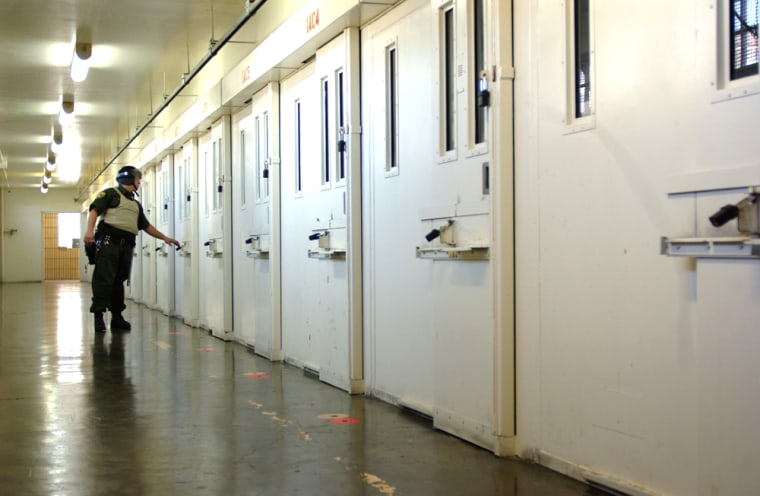For Scott Peterson, ultimately there may be little difference between a death sentence and life in prison. In California, the chances are greater that a condemned inmate will die in prison than be executed by lethal injection.
California is home to the nation’s most clogged death row, housing 641 condemned men and women, but the state has executed just 10 inmates since it resumed capital punishment in 1978. In that same period, 38 death row inmates have died of other causes: Three were killed by other prisoners, a dozen committed suicide, and the rest died of natural causes.
“This problem of the backlog seems to be insurmountable right now,” said Edward Jagels, Kern County’s district attorney.
Last execution in January 2002
Stephen Wayne Anderson was the last California prisoner to be put to death, after languishing on death row for more than 20 years. He was executed in January 2002 for the 1980 murder of an 81-year-old woman.
Members of the Peterson jury who spoke to reporters after Monday’s verdict said they were unaware that Peterson may never enter the execution chamber. Instead, they said they decided on the ultimate punishment because it fit his crime, murdering his pregnant wife.
They said Judge Alfred A. Delucchi told them to believe a death verdict means Peterson would be executed. They did not discuss the slim chances of their death verdict actually being carried out.
“I haven’t even thought about it,” juror Steve Cardosi said.
Peterson was convicted Nov. 12 of murdering his wife, Laci, and the fetus she was carrying. The jury reached its death verdict Monday on its third day of deliberations.
The judge will formally sentence Peterson on Feb. 25. If Delucchi affirms the verdict, the 32-year-old former fertilizer salesman will be sent to the state’s death row at the notorious San Quentin State Prison, which overlooks the bay where prosecutors say Peterson dumped his wife’s body.
He will have his own cell, he will be allowed outside in the prison yard for five hours a day and he will be offered three showers a week. Meals will be given at the same hours three times a day.
It will be Peterson’s routine for decades to come as his case is appealed.
First mandatory appeal five-plus years off
If Peterson is sentenced to death, he will sit on death row for more than five years before he is appointed an attorney for his first and mandatory appeal to the California Supreme Court.
A big reason for the delays is that there are too many inmates with too few lawyers willing to volunteer for the relatively low-paying job. A condemned Peterson would join about 120 others who do not yet have lawyers.
And even when an attorney is appointed, there are no deadlines for California’s high court to act.
Of the 38 states with the death penalty, California moves the slowest toward executions. The most active death penalty state, Texas, has executed 23 inmates this year and 336 since 1982, when executions resumed there.
Once Peterson’s state appeals are exhausted, his case would move to the federal courts, beginning with the district court and then on to the San Francisco-based 9th U.S. Circuit Court of Appeals, which has overturned more California death sentences than it has allowed.
Other jurors who have sent prisoners to death row said an appeals process that can drag on for decades played no role in their decision.
“Our job wasn’t to think about what could happen in the future,” said Brian Bianco, foreman of the jury that sentenced Richard Allen Davis to death for the 1993 kidnapping and murder of a girl named Polly Klaas. He said the jury did not consider whether Davis would ever be executed: “The system is what it is.”
To this day, Davis avoids the communal exercise yards at San Quentin, where he is a target because of his crime against a child and because it led to California’s three-strikes law for repeat offenders.
